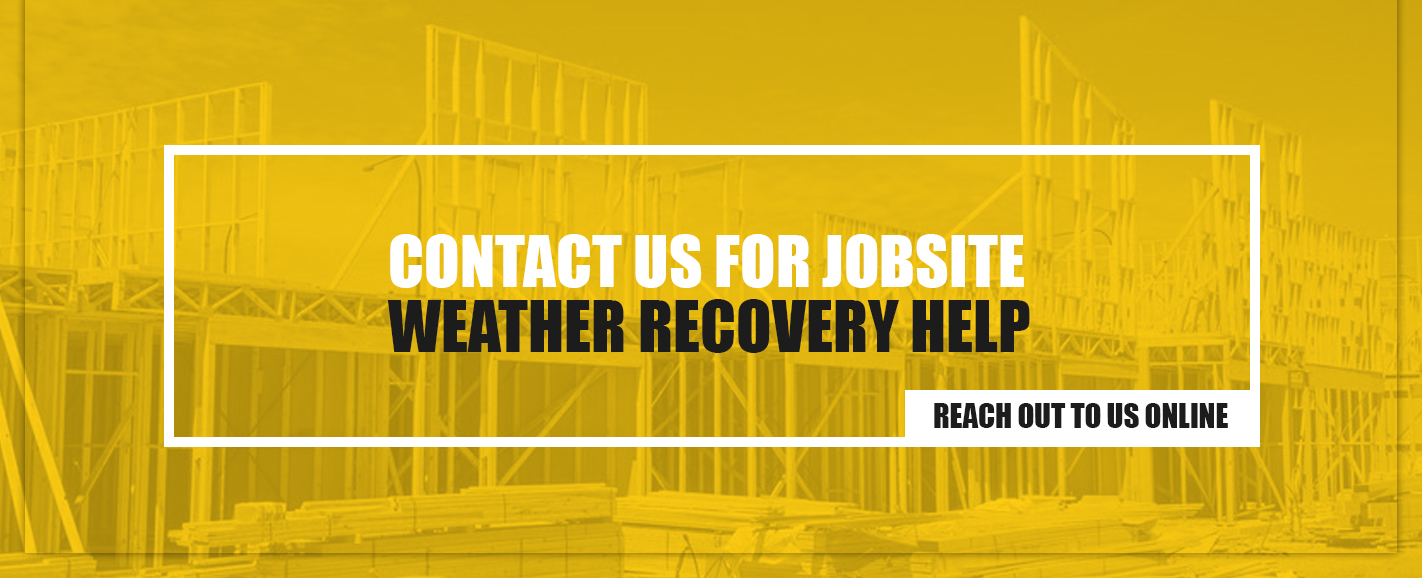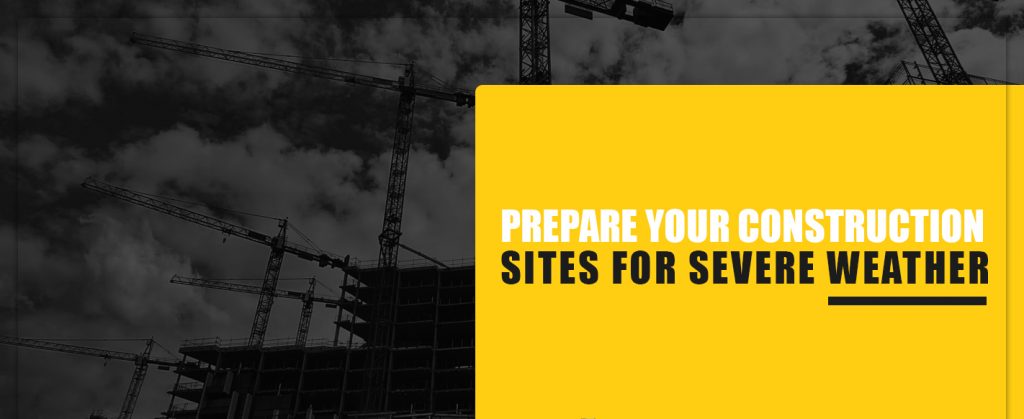
Jump To Sections:
- Importance of Weather Awareness
- Types of Severe Weather
- Seasonal Weather Risks
- Preparing Your Jobsite for Severe Weather
- Risks of Severe Weather
- Take Severe Weather Seriously
- Jobsite Checklist Before Severe Weather Happens
- Jobsite Checklist for Severe Weather
- Recovering From Severe Weather
- Contact Us for Jobsite Weather Recovery Help
Don’t let the weather cause long-term disruptions on your construction site. Being prepared means having your equipment and workers ready for anything from a sudden rainstorm to freezing temperatures. These changes in weather are especially frequent in New York and Connecticut. Preparing your construction site will reduce delays and prevent worker injuries. Construction site weather safety considers factors outside the site, as well as maintaining safe conditions inside the work area.
Importance of Weather Awareness
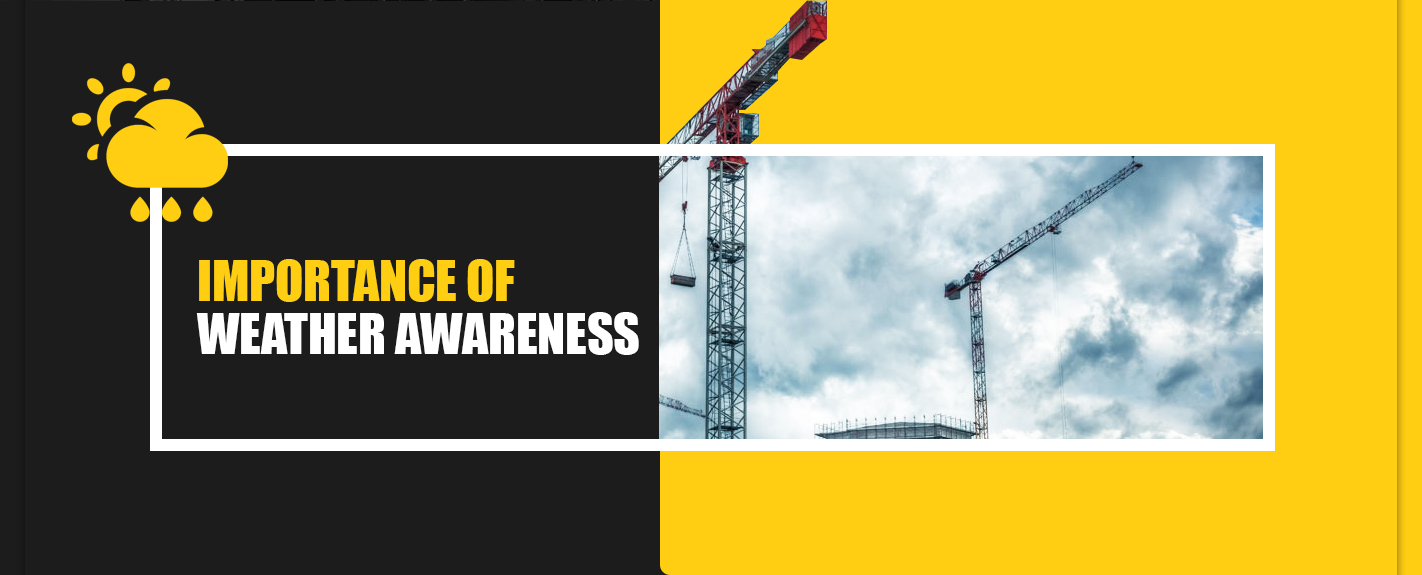
Preparing for construction site severe weather starts with weather awareness. Make it a habit to regularly check both short- and long-range forecasts for your area. You can take some preventive measures before a storm strikes. These last-minute jobsite preparations can prevent damages to your equipment and loss of productivity. Construction safety in severe weather can mean the difference between life and death for your employees.
Types of Severe Weather
Severe weather takes many forms, and in the Northeast, it can strike at any time of year. Some are more predictable than others by following forecasts, but some of these conditions can create dangerous situations with little notice. Always be ready for sudden weather changes that could require a rapid response to prepare your construction site for severe weather.
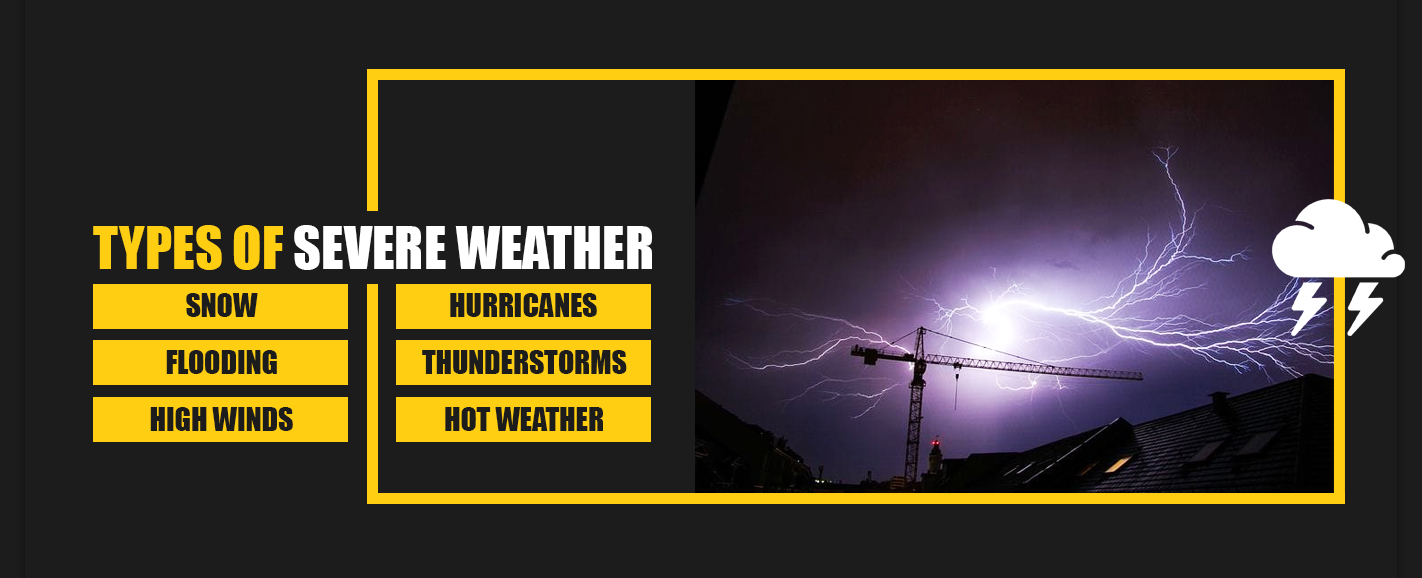
- Snow: Luckily, you can typically plan for snowstorms. And you will need this planning time to ready your equipment. Snow and ice can get into the components of your heavy equipment, blocking air flow or causing components to freeze. Additionally, if you fail to protect your machinery, you may find yourself having to dig out your machinery after a heavy snowfall.
- Flooding: Flooding can occur suddenly from flash floods, or slowly from heavy rains. Because flooding can occur all year, always be ready with a plan to quickly move your workers and equipment to higher ground, primarily if your jobsite is near a body of water.
- High winds: High winds can appear without warning. Sometimes, heavy winds result from storms, but occasionally they happen without accompanying other weather phenomena. Without protection, high winds can topple walls or heavy equipment.
- Cold temperatures: Freezing weather does more damage than you might think. Wintry weather severely affects diesel engines. The cold makes oil move slower and engines work harder. You’ll need to winterize your equipment if you intend to continue operations through the cold.
- Hurricanes: Hurricanes, thankfully, don’t affect the Northeast as much as they do other parts of the country, but because these tropical storms are so rare, many do not know what to do to prepare for them. Always have a plan in place to prepare your construction site for a hurricane. Storm tracks can change suddenly, and you should be ready to protect your jobsite if a hurricane is anywhere in the Atlantic.
- Thunderstorms: Thunderstorms bring lightning, high winds and heavy rains — all conditions that can make working on a construction site dangerous for your employees. And storms are not just a summer phenomenon. They can occur at any time of year. Take steps to prepare your construction site for a storm.
- Hot weather: Hot weather can cause heat illnesses in workers. Due to the heat output of the equipment and the strenuous nature of construction work, heat affects construction crews more easily than office workers. Sudden heat waves that do not let your workers acclimate themselves to the hot weather are especially dangerous.
Awareness of the types of construction site severe weather you may encounter is just the first step toward preparing your jobsite. You’ll also need to know when the construction safety risks are highest for certain types of weather. Seasonal weather risks can help you plan when getting your site ready for the elements.
Seasonal Weather Risks
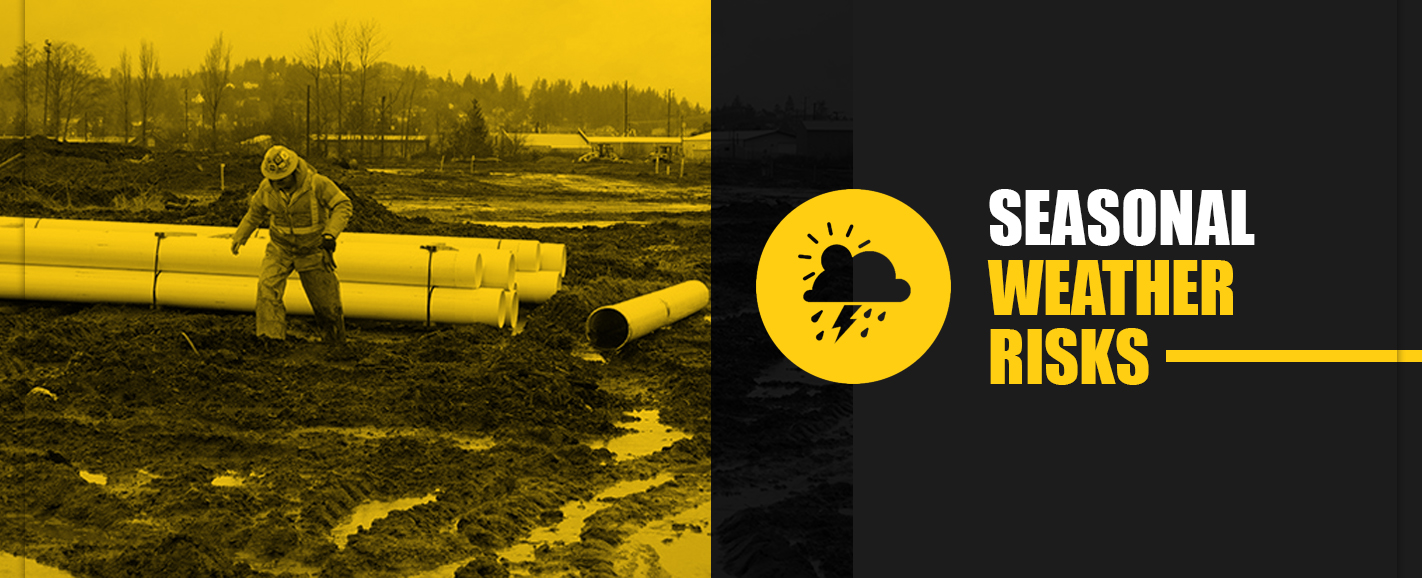
Because certain weather events only occur during a few months of the year, you can prepare some things on your construction site to ready your equipment and personnel for these.
Spring and Summer Risks

Before the heat rises, train your employees to recognize signs of heat illness and stress and to take ample rest and water breaks. Working hard and wearing protective clothing put workers at higher risk for heat illnesses. Without treatment, heat exhaustion can worsen to heatstroke. The latter is the worst effect of heat. The body temperature rises dangerously to 106 degrees Fahrenheit. With heatstroke, the worker may get confused, feel faint or have seizures. If any of these happen, call 911 immediately. If you are in doubt about an employee’s medical condition from the heat, get medical assistance. Heat illnesses or death can occur in employees undertaking moderately strenuous effort in temperatures as low as 70 degrees Fahrenheit.
When the weather warms, watch out for thunderstorms, which pose the hazards of wind, rain and lightning. Melting snow increases flash flooding risks as water flows downstream. Your construction site could flood from upstream snowmelt and rain even if it’s not raining in your immediate area. Always be ready to move to higher ground and engage pumps if needed.
Hurricane season lasts from the beginning of June through the end of November. But storms can develop before and after the season, too. The risks of hurricanes include severe thunderstorms, high winds, lightning and heavy rains. Luckily, hurricanes offer some warning before they strike, but you will need to have an action plan in place before your local meteorologist or weather service issues storm warnings.
Winter Risks
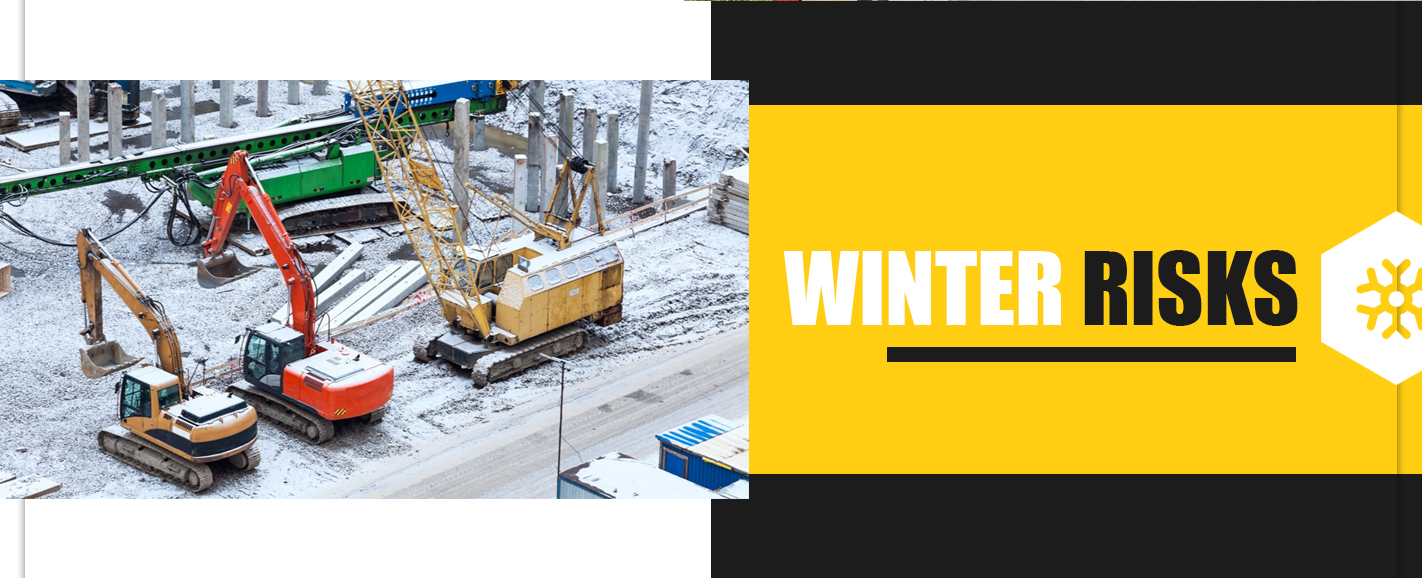
Though heat-related illnesses and thunderstorms are not likely to pose hazards to your jobsite in winter, other weather conditions will. Snow, ice, freezing weather and high winds can devastate a worksite. The weight of a heavy snowfall can collapse incomplete structures. Freezing temperatures take a toll on your diesel equipment. And ice poses a fall hazard for workers. Naturally, your winter action plan will look vastly different from the one you have in place for the warmer months.
Preparing Your Jobsite for Severe Weather
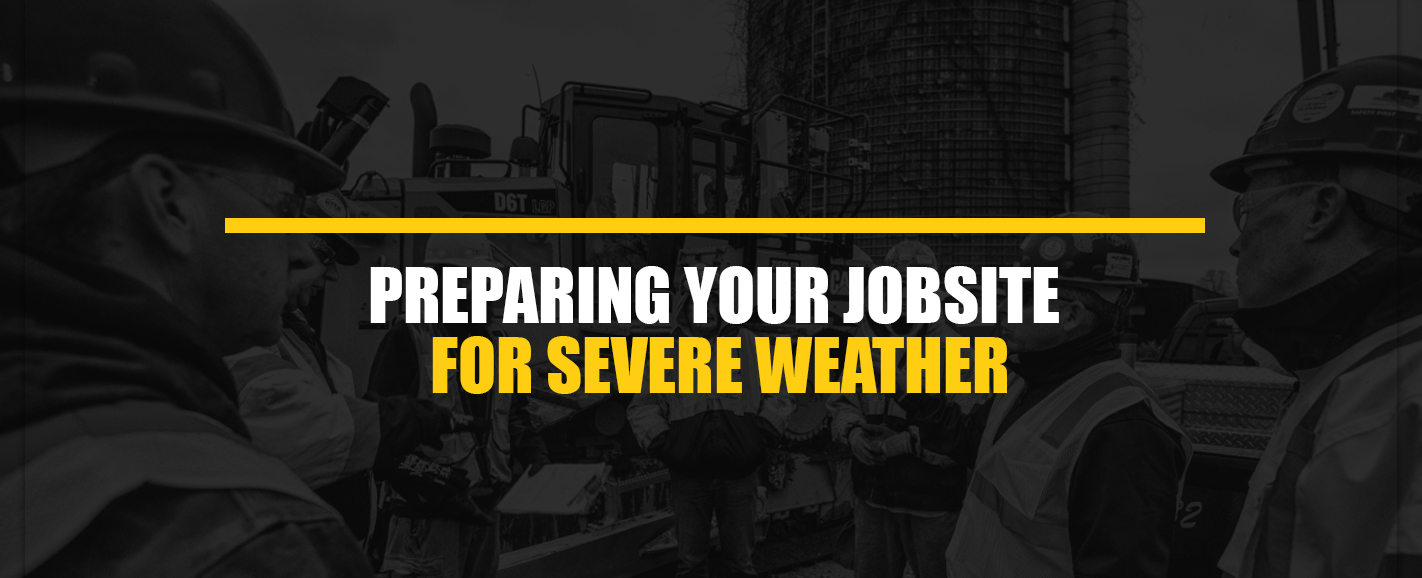
Making your jobsite ready for severe weather means you only need minor last-minute changes to adequately prepare the area in the even conditions worsen. With adequate seasonal preparation, you can avoid injuries and financial losses on the site.
Preparation During the Spring
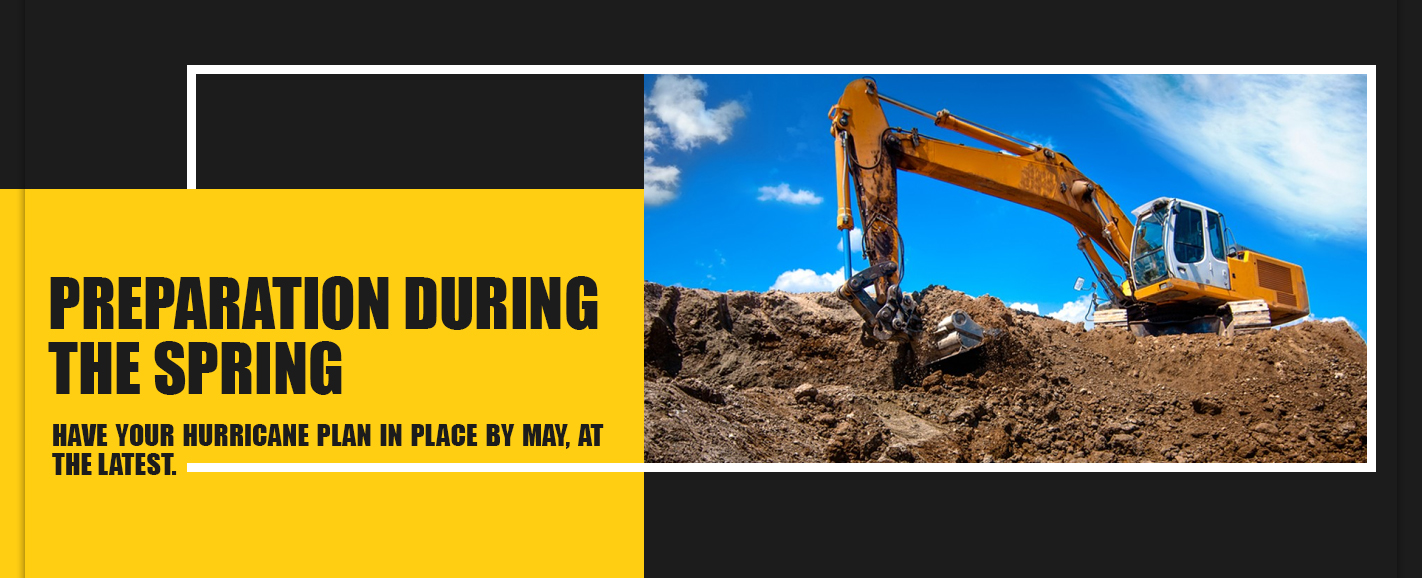
Have your hurricane plan in place by May, at the latest. When a storm watch affects your area, tie down heavy equipment and secure any loose objects. Brace walls in place to keep them from blowing over. Cover piles of sand, topsoil, mulch and other free items with heavy tarps to keep them from blowing away. Understand the difference between watches and warnings. A hurricane watch means a hurricane could affect your area, while a warning indicates conditions will reach hurricane level within 24 hours.
Warming weather and heavy spring rains also increase the chances of flash flooding as snowmelt adds to the volume of streams and rivers. Before using equipment below grade, install drainage pumps and ensure they work properly. Find a location on your site where you can move mobile equipment and workers in the event of a flash flood.
During lightning events, provide a protected area away from trees and metal equipment for workers to take cover in. Lightning often strikes workers who go back outside too soon. Instruct employees to remain in an enclosed area until 30 minutes after last hearing thunder. If your workers lack an enclosed building, instruct them to stay inside a hard-topped vehicle until the storm passes. While you can use commercial lightning detectors, do not rely solely on these, as they cannot give warning before the first strike. Following weather reports and watching the skies both do just as good of a job to warn of impending lightning danger.
Spring preparations include training your workers for recognizing and preventing heat illnesses. Heat can kill, especially for outdoor workers. Make plans in the spring for shady spots where your workers can take breaks out of the sun. Frequent breaks for hydration and to rest from the heat go a long way toward preventing heat illnesses.
Preparing for Winter
Preparing for winter starts with making your equipment ready. Winterize your machinery by changing the oil and fuel to winter blends. Additionally, switch coolant for antifreeze in any diesel engines you operate. If you need help winterizing your equipment, you may have to rent machinery until your fleet is ready. Prepare yourself for this option, especially if winter comes suddenly and you want to avoid work stoppages.
Wintry weather poses just as much of a risk to your workers’ health as heat. Even in temperatures up to 40 degrees Fahrenheit, workers who become wet from immersion, sweat or rain could experience hypothermia, which occurs when the body’s temperature drops dangerously low. Train your workers and have heaters ready before temperatures at your jobsite get below freezing.
Fall is an ideal time to ready your workers for winter operations. Train them to recognize cold injuries and stress and how to safely work in snow and ice. Instruct workers about winterizing procedures they will need to do on any onsite machinery. Add antifreeze to sprinkler systems to ensure fire suppression, even in freezing weather. Add salt to footpaths and roadways around the worksite to prevent slips and enforce safety rules for wearing personal protection.
Risks of Severe Weather
Severe weather risks your employees’ health and safety. Not preparing for dangerous weather conditions also puts your jobsite at risk of delays. A well-prepared site can weather almost any storm with fewer problems than one that was not ready for adverse conditions.
Take Severe Weather Seriously
Severe weather can kill. Everything from lightning to heat poses a risk to your workers. Without training and preparation, they could pay the ultimate price for working in adverse conditions.
- Heat sickens and kills: In 2016, the construction industry had 11 deaths from heatstroke, while thousands more became ill.
- Lightning is dangerous: Annually, an average of 300 people get struck by lightning, and 50 die as a result. Construction workers in the open or working on roofs or scaffolding have a higher risk of lightning strikes compared to the general population.
- Cold temperatures maim: Don’t just prepare for freezing weather, but all frigid conditions, especially if your workers may get wet. Frostbite, hypothermia and trenchfoot can all occur at above-freezing temperatures. Hypothermia can cause death. Frostbite may lead to amputations, and trenchfoot can kill tissues in the feet. All these severe conditions could disable your workers for life.
- Snow causes deaths: Over a 10-year period, OSHA examined 16 cases of fatalities or injuries that resulted from rooftop snow removal. The organization discovered that, had the workers taken adequate safety measures, they could have prevented all 16 cases of injury or death. Fortunately, you can proactively prepare your construction site for snow and help save lives.
- High winds lead to losses: In 2016, across the United States, high winds caused 23 deaths and 87 injuries. Along with the human toll, property damage from winds totaled $95.8 million. While these numbers covered everyone across the country, not just construction workers, the data illustrate how severe winds are in causing loss of property and life.
- Flooding damages property: Between flash flooding and river flooding, 126 people lost their lives in 2016. Property damages cost Americans more than $1 billion when combining flash flooding and river flooding damages. Floods devastate finished constructions, but swift-moving flood waters can sweep away equipment and building components as quickly as a hand pushes away toy cars. Prepare your construction site for flooding to prevent severe loss.
Putting a price tag on human life is impossible. But even if the weather did not kill or injure a single person, it can still cause significant delays in your project. Preparations will protect your workers and your jobsite.
Jobsite Checklist Before Severe Weather Happens
Get your jobsite ready for anything by conducting daily checks in addition to your seasonal and pre-storm preparations. Each day, do the following to make it easier for your jobsite to recover from severe weather.
- Finish projects: Instruct workers to always finish one project before starting another. This practice will reduce the number of unfinished tasks on your construction site. Incomplete sections pose a more significant threat to damage during a storm because they lack the strength of finished parts.
- Take pictures: Take photos of your jobsite at the end of each day. You’ll have proof of any losses for your insurance company if a storm passes the area overnight. Additionally, you’ll have a reference for the amount of work your crew completes each day during the project’s course. Keep these pictures with any vital documents in a protected safe offsite.
- Create a contact flowchart: Train employees to contact supervisors on a flowchart if severe weather threatens. Additionally, if you must call off work due to a pending hurricane or severe snowstorm, a phone tree ensures someone contacts every worker.
- Stock emergency supplies: Keep tie-downs, braces and other equipment to secure your site if winds rise. You’ll also need flashlights, bottled water and first-aid kits to help workers get through the severe weather.
- Create an action plan: Have action plans in place for all types of weather. Your plans should outline what your crews will do during snow, hurricanes, thunderstorms, winds and heavy rains. The plans must include how to protect the equipment and project in addition to how workers will stay safe. Your action plan is not only prudent but also required. Under OSHA regulation 1910.38, all employers must have an emergency action plan. If you have more than 10 employees, you must have a written plan. But if you have fewer than 10 workers, you can orally convey the action plan.
- Post critical information: Keep the action plan, along with the numbers of local emergency services, posted in an accessible spot for all your workers.
Keeping your workers aware of your plans will make starting a last-minute site securing process faster. You won’t have to explain your expectations if your workers know their jobs and when to do them when severe weather threatens.
Jobsite Checklist for Severe Weather
When severe weather is imminent, you’ll need an action plan to secure your site and keep your workers from harm. Though the exact steps will depend on the weather you’re preparing for, follow these general steps to ready your site for anything.
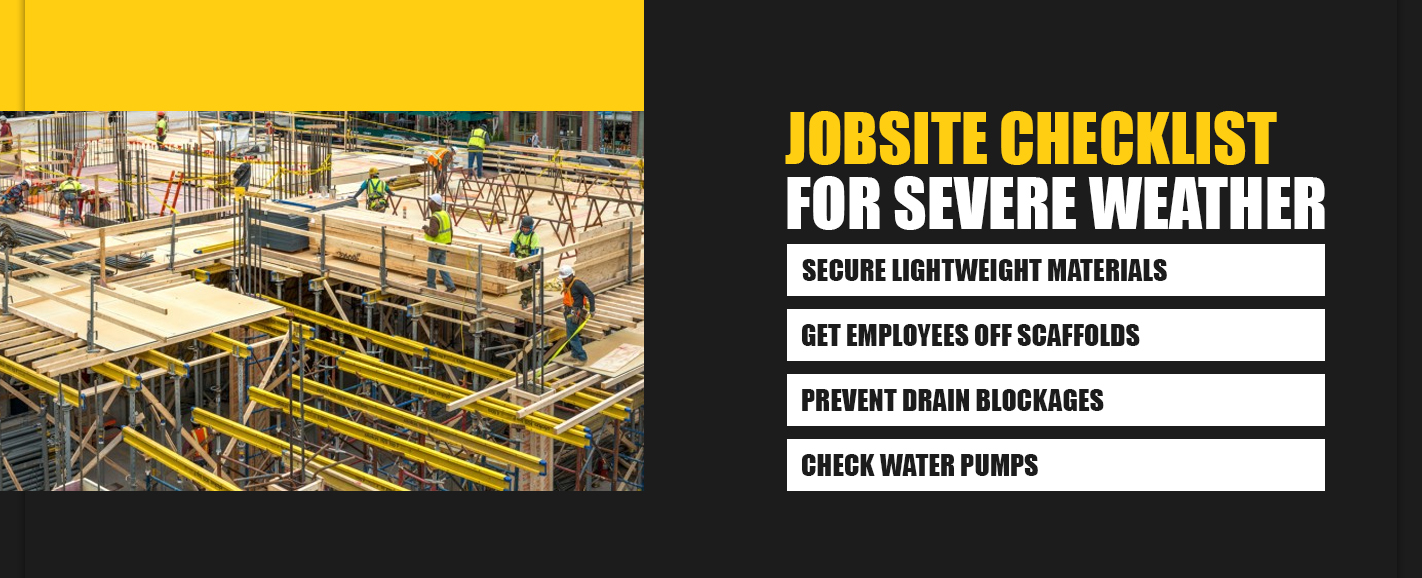
- Secure lightweight materials: Many severe weather events have high winds. Secure signage and loose articles either inside or under tarps.
- Get employees off scaffolds: During dangerous weather conditions such as thunderstorms, snowstorms or wind events, have all workers dismount scaffolding around the jobsite. Secure the scaffolding to the building to prevent its collapse.
- Prevent drain blockages: Don’t let sand clog drains. Place filters over the drains or protects them from dirt accumulation to prevent flooding. Also, clear stormwater inlets and catch basins of any debris.
- Check water pumps: Keep your water pumps in top condition to prevent flooding of subgrade areas.
- Cover holes: Cover excavation holes on your jobsite to protect them from flooding.
- Disconnect power: Disconnect any temporary power connections. If you intend to restart operations and local power is still out, have a working generator onsite. If necessary, you may rent a generator. After Hurricane Sandy, rental power generators helped the entire area get back to normal. Also, shut off gas and water connections, if you have those on the jobsite.
- Secure equipment: If you can, move equipment into a sheltered area until the storm passes. Also, cover and secure any dumpsters and smaller trash receptacles.
- Remove temporary structures: Dismantle all temporary structures, including fencing around your jobsite. Failing to remove these structures could result in you having to search the neighborhood for them after the storm when they blow away in the wind. Lower any onsite booms you have, too.
- Cover windows: Cover windows with storm shutters or plywood. Do not use tape over windows, as it does not prevent glass from shattering.
- Schedule workers: Depending on the weather, you may have to stop working at least 24 hours before the storm. Schedule workers who will help with last-minute storm preparation and who will return after the storm to assist with recovery.
Having a general outline of how to prepare your jobsite can make creating action plans much more manageable. Many steps overlap, and you can continue to maintain a moderate level of readiness throughout the year. If you do, you’ll need just a few last-minute changes when severe weather threatens.
Recovering From Severe Weather
Getting your jobsite back up and running will require efforts from your workers beyond their typical jobs. Contact all your workers to see if any cannot return to work due to blocked roads or storm damage at their homes. Clean up any debris around the site and assess the area for damages. If you had any losses, make notes and take pictures. Depending on your policy, the claims process may differ. Always consult with your insurance agent for policy-specific questions.
Until insurance pays for your claims, consider renting equipment to finish your project while waiting on insurance or for repairs on your machinery. Another option to get back to work quickly is to call for mobile service. We have 60 field service technicians who can get your fleet back to operations.
Contact Us for Jobsite Weather Recovery Help
If you’ve lost equipment due to severe weather or need rentals, contact us at H.O. Penn Machinery. Visit us at one of our six convenient H.O. Penn locations in Holtsville, Bronx, Newington, Poughkeepsie, Bloomingburg and Medford, give us a call at 845-448-0018, or reach out to us online. We offer new, used and rental construction equipment to help you get your job done, regardless of what Mother Nature throws at you.

